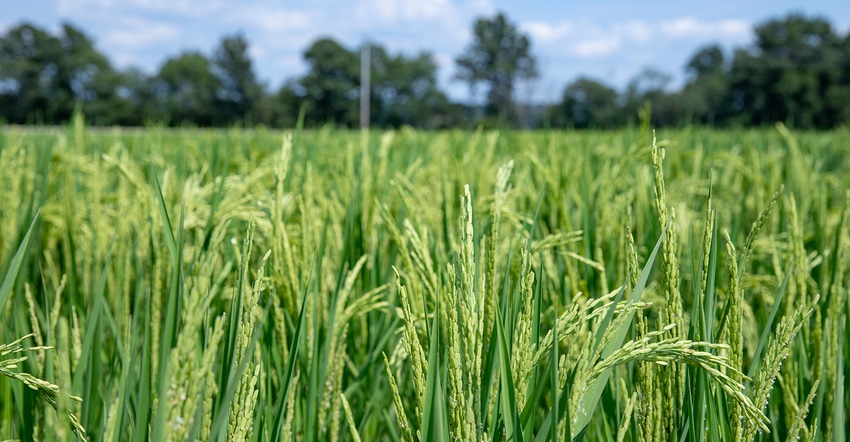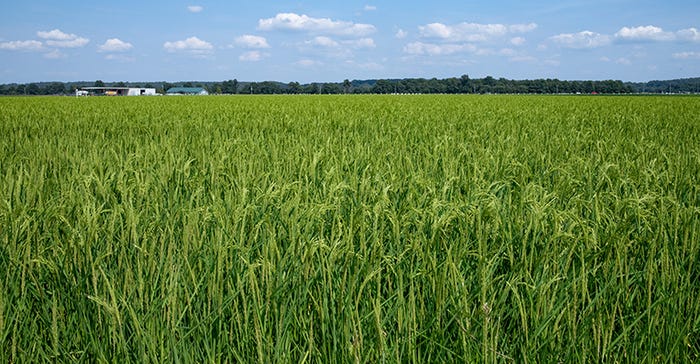September 1, 2022

Sponsored Content
For most, the seasonal goals of crop protection products are controlling pests – including naturally occurring and evolving weed varieties, insects and diseases that threaten the quality and quantity of the crops. However, behind these immediate goals exists a more enduring, shared obligation of the crop protection industry and growers who use their products.

What is rice crop stewardship?
Stewardship looks at rice crop management through a life cycle approach that considers both the immediate and long-term factors that affect yields and growth sustainability in a way that protects the supply of our food and commodities. Central to this holistic approach is the understanding that crop protection technologies are scientifically developed, meticulously tested and intensely regulated to provide benefits and manage risks. How those measures are employed in the field defines stewardship best practices – the common ground between the recommendations of crop protection providers and the responsible actions of growers.
Underlying the crop protection industry’s commitment to stewardship is the safe, ethical development and manufacturing of integrated pest management technologies and products designed to provide effectiveness with minimal environmental impact. Stewardship extends to the control of how products are distributed, stocked, and transported, establishment of labels and recommended application rates for growers, agreements on the management of containers, and proper product handling including disposal of unused or obsolete product.

Today, advanced rice cropping systems have been created that match herbicide-tolerant seed with specially formulated herbicides designed to fully protect the crop while preventing the development of weedy rice and grasses. These systems provide growers ease of application and high yield potential. However, as growers enjoy the benefits of these advanced technologies, they must faithfully exercise practices to prevent resistance development, cross pollination of rice and weeds, and improper use and disposal of herbicide products that threaten both their investments and their local ecosystem.
Growers that embrace stewardship best practices and follow label guidance gain higher value yields and ultimate control of red rice and grasses resistance issues. These practices include:
START EARLY – START CLEAN – STAY CLEAN
Apply a minimum of two applications of preemergent during the early stages of growth to keep weedy rice from flowering and going to seed.
OPTIMIZE APPLICATION RATES WITH MOISTURE CONDITIONS
Follow the product label and advice of your local provider. Be observant of moisture as it relates to herbicide timing.
ROTATE CROPS
Rotate crops or rice herbicide trait technologies annually and use different herbicide modes of action to help prevent the development of herbicide resistant weeds.
MANAGE RESISTANCE
Scout for, control and remove weed escapes frequently. Manage sanitation of all equipment between fields during use to prevent the spread of weed species between fields.
USE ONLY PRESCRIBED PRODUCTS
In rice cropping solutions, use only the matched herbicide formulated for maximum effectiveness and minimized risk.

The assurance you want.
At ADAMA, we are committed to developing effective, sustainable, crop protection solutions that are safe for those who use them and the environment. We take a comprehensive approach to monitoring environmental impact and mitigating risks in every stage of our product life cycle, from raw materials, to production, transportation, application, and all the way to end-of-life management.
Beyond the stringent regulatory requirements we meet, we ensure that growers know how to use our products properly, providing training and information through face-to-face interactions and on-line platforms. Growers that act to ensure their success by adhering to a stewardship agreement are eligible to receive the complete support and assistance of the ADAMA team, as well as significant product rebates.
About the Author(s)
You May Also Like




